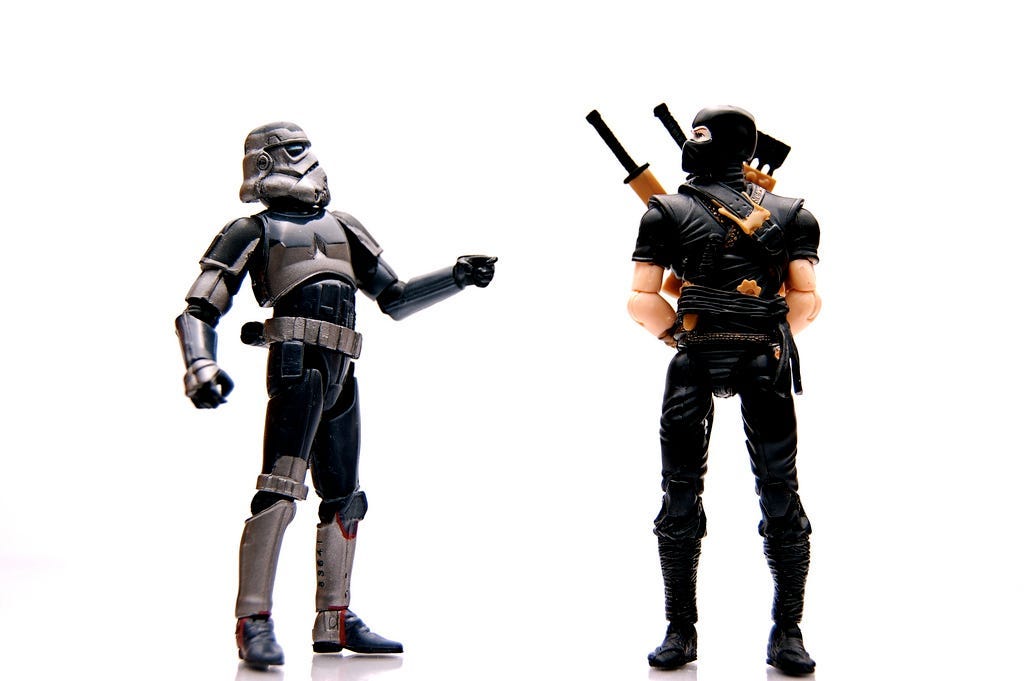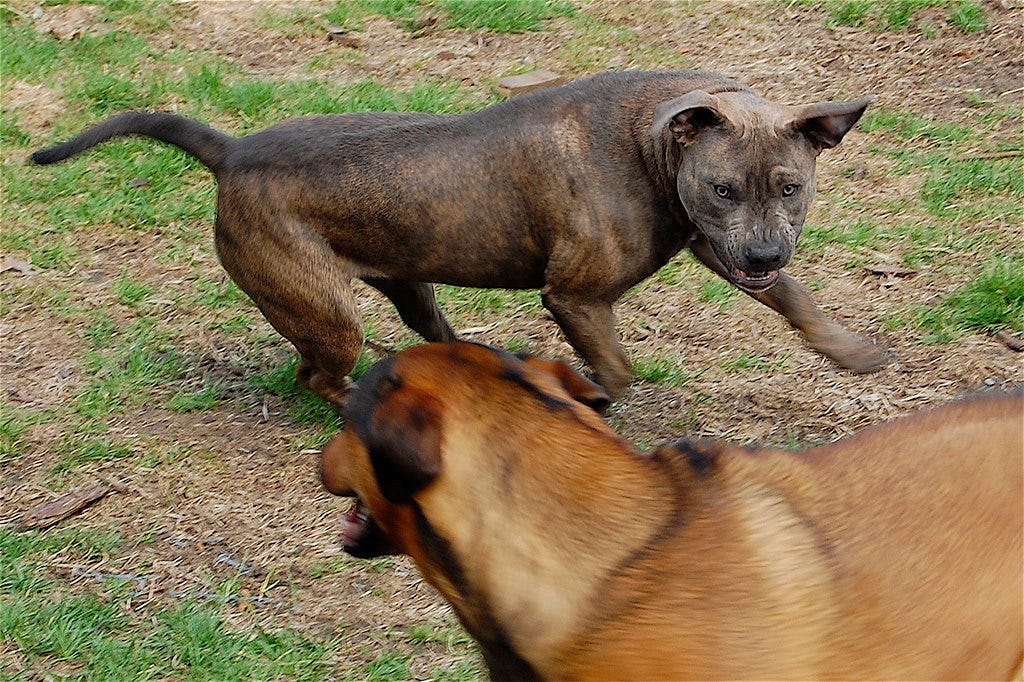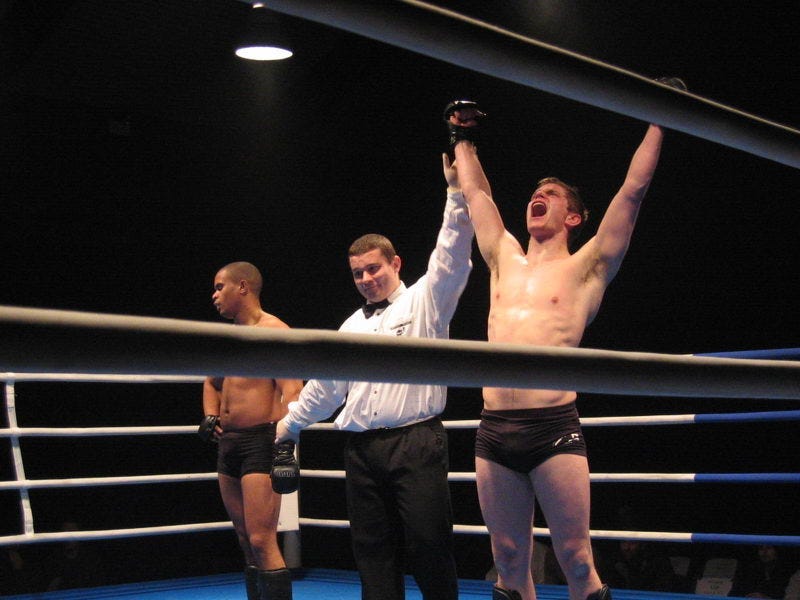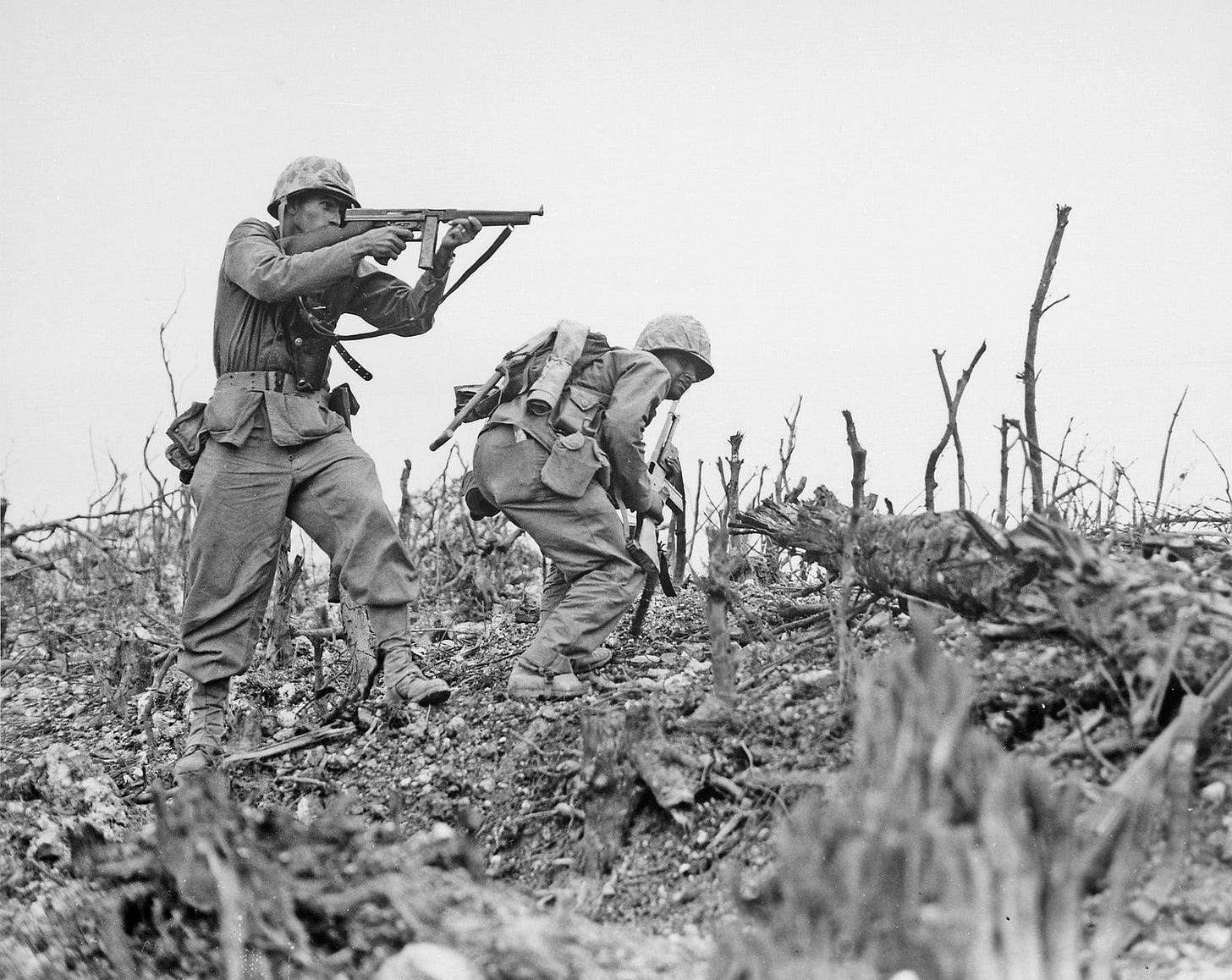On Choosing a Martial Art

Why do you train in martial arts? Do you enjoy competition? Are you testing your own limits? Is it for health and fitness? Do you seek personal, spiritual development? Are you looking for group bonding and identity? Is it aesthetically pleasing to you? Do you desire to be able to protect yourself and others? These are all legitimate goals.
It is worthwhile to be clear about why you choose to spend time and resources in pursuit of anything. If you’re going to spend time training in martial arts, or more broadly, “combative systems,” it’s important to understand combative systems are limited to specific contexts.
In order to understand which combative system to choose, it is first necessary to clarify an important distinction between “affective” and “predatory” combative behavior. (I am borrowing these categories and concepts directly from the work of Hunter B. Armstrong and the International Hoplology Society.)
These different behaviors evolved in group hunting mammals, including humans, serving two, separate, necessary adaptive functions. Popular culture tends to conflate these behaviors, but they are different.
Generally, group hunting mammals engage in “affective” combative behavior within their own group. The intended gains are group cohesion, hierarchical position, or social capital. This behavior evolves to safely establish group cohesion and leadership hierarchy, which are necessary for group hunting.

Affective behavior is marked by emotional arousal. Combatants engage in eye-contact, display, verbalization, competition, and other forms of social engagement. Postures make the individual appear larger but are less effective for movement or delivering force at a target. In humans, these behaviors rarely involve weapons. Built in to this behavior are psychological, biomechanical, and cultural inhibitions against causing serious harm to individuals within the group.
In contrast, group hunting mammals generally engage in “predatory” behavior with other species or other groups (“pseudo-predatory”). The intended gains are generally resources, i.e., food, water, minerals, currency, land, mates, etc. Predatory behavior evolves to efficiently cause death or serious bodily harm to prey or enemies.

Predatory behavior is marked by less emotional arousal. Combatants use vision for gathering information. Combatants do not engage in eye-contact or social interaction with the target. Efficiency of movement is primary with nothing waisted for the purpose of display. Combatants use verbalization exclusively for group communication and teamwork. Body postures are stealthy and efficient for delivering lethal force. In humans, these behaviors almost always involve weapons or weapon usable objects.

These are not hard and fast categories always with clear lines, but they are important, real distinctions that help to understand how and why humans fight.
Throughout the ages, humans have created various combative systems in order to prepare individuals and groups for violence. This affective/predatory distinction is useful for understanding combative systems. These systems fall into various groups and categories depending on evolutionary, historical, economic and social factors.
Some systems prepare the individual for sport or competition within the group. These systems generally do not include weapons.
Some systems prepare the individual to fight with outside groups. These systems always involve weapons or weapon usable objects. Weapons are tools specifically designed for the primary, intended function of killing another armed human adversary. A weapon usable object is any object that is designed for another purpose, e.g., a machete, or is naturally occurring, e.g., a rock, but a person can use the object to cause serious bodily harm or death to another human.
Some weapon systems are designed to prepare the individual to engage in civilian self-defense. Some weapon systems are designed to prepare the combatant for group or individual combat.
And there are many other combative systems designed for many other reasons.
Among the characteristics distinguishing between inter-group and intra-group combative systems are, as noted, the use of a weapon, and the threat of imminent bodily harm or death by an armed adversary.
It is important to note that these are short-hand and incomplete characteristics for distinction, which, if looked at alone, can be misleading. For example, dueling often includes weapons, but dueling are behaviors falling more closely within the “affective” category within the group for the sake of “honor” or other social capital. These behaviors and systems generally evolve toward rules and parameters that minimize harm.
These are crucial distinctions. Understanding the differences can help us to avoid unnecessary violence. More importantly, these distinctions should guide us in the choices we make about how we spend limited time to prepare for violence.
To bring us back to the beginning, it is first necessary to define your goal. Why do you train in martial arts? To what end? For what context?
I’m interested in practical preparation for violence that involves imminent bodily harm or death by individuals or groups armed with weapons or weapon usable objects. This prepares me for violent scenarios that would matter most in my life. These scenarios would most likely include protection against assault, robbery, rape, or murder. In other words, I train to use weapons against weapon-wielding individuals or groups for the protection of my family, my community, and my society.
Joe Rogan, MMA expert and spokesman, often touts UFC fighters as the “best martial artists who ever existed.” Well, sure, but the essential question is “within what context?” In an Octagon? Of course, but as soon as weapons come into play and the stakes are “imminent bodily harm or death,” then MMA breaks down as a system which prepares the individual. I claim it is a little better than wrestling, judo, boxing, or other sport, competition, and entertainment systems.
I have tremendous respect for many UFC fighters for their discipline, power, endurance, stamina, physical prowess, toughness, and courage. I would never willingly enter an octagon, and I certainly would not want to be in a bar fight with one. However, “As Real As It Gets,” this type of system has limited application to a situation of real imminent bodily harm or death involving armed combatants.
Consider, for example, hand striking systems. There is a significant difference between a hand that is wrapped and gloved versus one that is not. The parameters of these types of behaviors and tools are specifically intended and designed to minimize serious harm in competition. The wrap and glove allow striking otherwise debilitating to the hand. These tools (wrap and glove) have no application in combat where the behaviors are specifically intended and designed to maximize serious harm. No one wraps hands and puts on MMA gloves before picking up a rifle to go into battle.

Even removed from the context of military combat, it simply makes no sense in any context to wrap and glove a hand in order to protect oneself or group from imminent bodily harm or death. One cannot effectively hold a weapon with a wrapped hand. And contrary to popular perception, the glove protects the hand, not the head, allowing for the use of much greater force without injuring the hand. A bare hand for striking becomes all that much less effective for causing structural or neurological damage to an adversary. As skilled as these athletes may be, an armbar, a complicated striking combination, a roundhouse kick, or, especially, the “ground and pound,” are of limited application against multiple adversaries who outweigh you and are using weapons intent on causing serious bodily harm or death.
Let me be clear. I am not saying a UFC fighter would not be dominant in a street or bar fight. However, these are generally encounters that do not involve the “threat of imminent bodily harm or death.” When they do, it is usually accidental. These are not the encounters that should matter to a person concerned with the protection of his person(s) or society. Almost always, these encounters are the result of easily avoidable douchery. And almost always, these confrontations are about establishing social dominance, which can almost always be better resolved through some well-placed words — or silence — resulting in far less legal liability and costly medical and dental bills.
Familiarity with sport grappling can be useful for knowing how to identify and avoid these encounters and knowing how to stay on your feet. Grappling is also helpful in situations when you must subdue your adversary with non-lethal force, for example, if you’re a police officer. (As a side note, an individual in a defense against imminent bodily harm or death scenario does not have this responsibility, legal or ethical.) In addition to those benefits, MMA training creates familiarity with aggression and violence that can be helpful for maintaining the proper mindset.
However, MMA training prepares the individual for close-combat weapon use no better than soccer or baseball. In the Octagon, there are specific parameters that make an application to combat and self-defense limited at best. Restated, the primary defining characteristic that limits its utility is the absence of weapons. Every aspect of the Octagon is controlled from the rules (to protect athletes so they can fight again), to the preparation for a specific event, at a specified time, at a set location with a smooth, cushioned floor in a confined space, against one, clearly defined competitor who is closely matched in weight and stature.
One may even argue team sports teach the individuals to work as a team over a sustained time period within a dynamically moving environment, which prepares one for combat better than MMA. The conditions of combat do not allow for the cushions and control we establish in sports.

Simply put, in instances of violence involving an imminent threat of bodily harm or death, no rational human being should ever engage without a weapon or weapon usable object. Therefore, in the context of protection against imminent bodily harm or death by a weapon-wielding adversary or adversaries, understanding and capability in weapons use are of paramount necessity. If caught without a weapon, the first goal should be to acquire a weapon or some other object that can be used as one.
In this context, the firearm is at the top of the pyramid. However, the firearm is not always available nor is it the only effective weapon. Down the list of lethal weapons are blades from long to short. Then there are weapons and weapon usable objects with varying degrees of length and mass. The more length and mass (within the ability to manipulate the object), the more effective the object.
However, simply having a weapon is not sufficient. A weapon alone can do nothing. One must be capable of using the weapon under extraordinary stress. Weapon capability necessarily includes (but is not limited to) mindset, timing-distancing-targeting, mobility, proper body mechanics, and understanding of the logic and operations of weapons. Many of these principles can only be trained against adversaries armed with weapons. For example, the principle of timing-distancing-targeting has no meaning except in the context of a moving, intelligent, armed adversary. Exclusively practicing against stationary, non-human targets, or with no targets at all, can do nothing to train this principle, which is necessary for effective weapon use.
Perhaps the most difficult and dangerous aspect of self-defense is knowing when, in reality, one is in danger of imminent bodily harm or death. The most effective technique for self-defense is avoidance.
However, on the edges of danger, it is the ambiguity of each moment leading up to the moment of imminent bodily harm or death that potentially renders any combative system useless. The most lethal and effective weapon cannot do anything if not deployed in time and on an effective target. Often, the victim is not aware he or she is in danger until it is too late. Most adversaries in these situations do everything to conceal their intentions to cause harm. Often, the victim suffers from denial or carelessness.
This is why the mind and behavior, including situational awareness, are the most important aspects of training for the scenarios of imminent bodily harm or death. These aspects are also the most difficult and complicated to train. Nevertheless, these should be at the heart of any combative training system aimed at preparing the individual for contexts involving imminent bodily harm or death by armed adversaries.
Again, there are several legitimate goals you may seek when engaging in a combative system. No one goal is inherently better than others. Each one is specific to the context. Some systems prepare the individual for the Octagon. Some prepare for street fights. Some systems serve the primary purpose of individual development, spiritual, physical, or otherwise.



